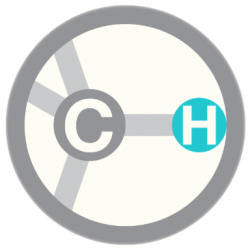Authors: Vishakantha Murthy, Huw M.L. Davies, Simon J. Hedley, Steven R. Childers
Biochemical Pharmacology
2007, 74, 2, 336-344
Irreversible tropane analogs have been useful in identifying binding sites of cocaine on biogenic amine transporters, including transporters for dopamine (DAT), serotonin (SERT) and norepinephrine (NET). The present study characterizes the properties of the novel phenylisothiocyanate tropane HD-205, synthesized from the highly potent 2-napthyl tropane analog WF-23. In radioligand binding studies in brain membranes, direct IC50 values of HD-205 were 4.1, 14 and 280 nM at DAT, SERT and NET, respectively. Wash-resistant binding was characterized by preincubation of HD-205 with brain membranes, followed by extensive washing before performing transporter radioligand binding. Results for HD-205 showed wash-resistant IC50 values of 191, 230 and 840 nM at DAT, SERT and NET, respectively. Saturation binding studies with [125I]RTI-55 in membranes pretreated with 100 nM HD-205 showed that HD-205 significantly decreased the Bmax but not KD of DAT and SERT binding. To further characterize its irreversible binding, an iodinated analog of HD-205, HD-244, was prepared from a trimethylsilyl precursor. The direct IC50 of HD-244 at DAT was 20 nM. [125I]HD-244 was synthesized with chloramine-T, purified on HPLC, reacted with rat striatal membranes, and proteins were separated by SDS-PAGE. Results showed several non-specific labeled bands, but only a single specific band of radioactivity co-migrating with an immunoreactive DAT band at approx. 80 kilodaltons was detected, suggesting that [125I]HD-244 covalently labeled DAT protein in striatal membranes. These results demonstrate that phenylisothiocyanate analogs of WF-23 can be used as potential ligands to map distinct binding sites of cocaine analogs at DAT.

